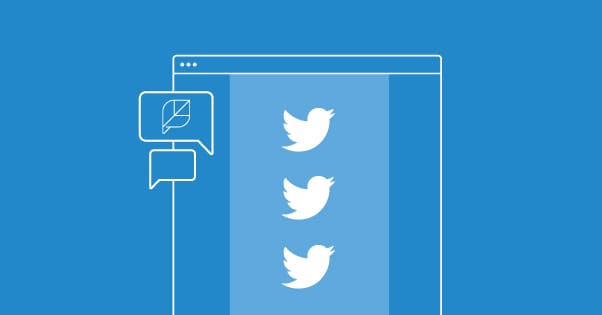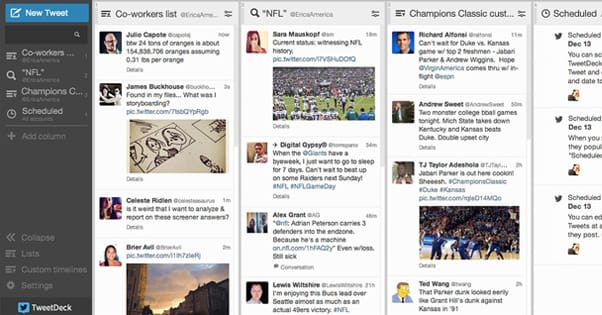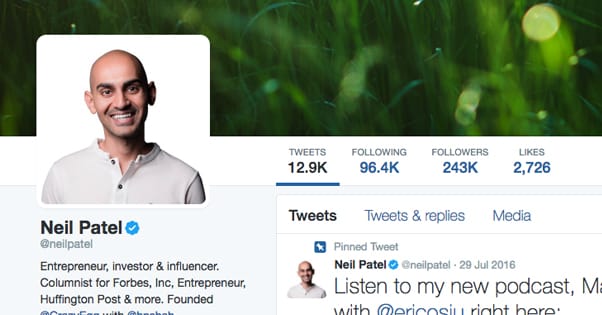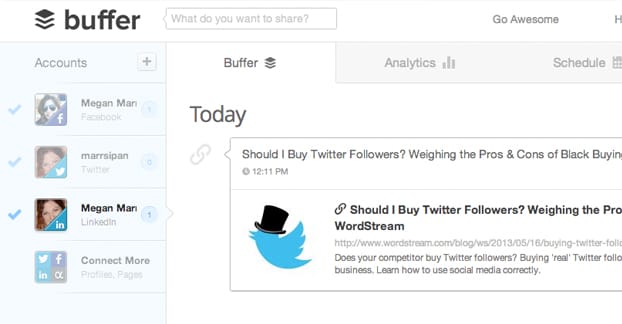Twitter does not have rules against creating and maintaining multiple accounts. In fact, there are many legitimate reasons to build more than one account. First, though, let’s talk in general terms.
Yes and No
There are quite a few reasons why you might want more than one account, but there are also some good reasons not to make them, and some bad reasons to try to make them. I’ll walk you through scenarios for both good and bad reasons to want multiple accounts, but first let’s talk about the mechanics of managing them.
Managing multiple accounts is pretty simple, if you have the right tools for the job. TweetDeck is free and will do it for you, and there are a bunch of other options I’ve covered before. Management of multiple accounts isn’t a problem, unless you’re trying to make a horde of dozens of accounts all do the same thing at once. That’s the kind of spammy action that will make Twitter ban your account, and it’s not what you should be aiming to do with them anyway.
You do have some mechanical quirks. For one thing, each Twitter account needs its own email address. If an account is banned, you can’t just go reuse that email address, so you’re stuck. It’s a limitation you may need to work around.
Multiple accounts can be great if they all have different purposes or perspectives. It’s only when the accounts overlap too much, have too great a similarity, or are outright used to duplicate the actions of others that they become troublesome.
You also have to remember that investing in the growth of more than one account can be quite expensive, both in terms of advertising and in time. You can spend money to save time, or spend time to save money, but the investment is still there.
So, while there can be good benefits to having more than one account, often times you will find that a given scenario puts one of them on the back burner and only focuses on growing one account. Let’s take a look at those scenarios now.
Situation: Brand and Personal Accounts
In this first situation, you’re a business owner and you want to run a Twitter account for your business, but you also want to have your own personal account. Both of them are worth growing, but for different reasons. The business account can draw in more traffic and more potential customers, as well as handle customer contacts and service issues. It can keep people notified of service outages or products going out of stock. Meanwhile, your own personal account will be more personal, maybe more political, and more about you as an entrepreneur or CEO. Its for building connections with influencers, for hunting down your next big project, and for retweeting content that’s interesting to you.
There are a few real world examples of this. Neil Patel has his own Twitter account, as well as accounts for his brands, like QuickSprout and Crazy Egg. Interestingly, the Quicksprout Twitter account is barely optimized and barely used, so it was probably decided that it wasn’t returning enough on its investment and was left to languish.
Another example would be the crazy billionaire Elon Musk with his personal account, as well as accounts for companies of his like SpaceX and Tesla. Now, someone on the level of Elon Musk probably rarely if ever touches the Twitter accounts for his companies. He almost certainly hires someone to manage them for him, because he has more than enough money to spare for it. That’s an option you can take as well, if you don’t want to have a direct hand in your brand accounts.
Situation: Brand and Customer Service Accounts
A much more common scenario is where you have two accounts, one for your brand itself, and one for your brand customer service. Your main brand account gets all of the attention, all of the content, and all of the emphasis on growth. In a sense, it’s like having one main account.
The advantage of a dedicated customer service account is huge. For one thing, people will know right away that they’re going to be in contact with someone actually in your customer service department. With a normal brand account, a CS request might just go to a social media rep with no knowledge or authority, and all your user gets is a form letter telling them to submit a support ticket. It’s impersonal and unhelpful.
With a dedicated customer service account, users feel like they’re getting special, immediate attention, and they are. It’s just “special” attention everyone can get. Xbox is one such brand, with their main account, a support account, an account for a specific representative of the brand (Major Nelson) and even additional accounts like Phil Spencer’s account, the Xbox UK account, and an account for their rewards program. This is more excessive than you actually need as anything other than a massive brand, though. Bank of America might be more on the appropriate level, with their main corporate account and a help account. They don’t use it right, but it’s the concept in action.
Situation: Accounts for Multiple Brands or Franchises
This is more of two situations rolled into one. Think of Elon Musk again; the Twitter accounts for each company he owns exist for a reason and are all good investments. On a smaller scale, as an entrepreneur, you might only have two businesses, but each one can benefit from a professional account.
Franchises are a similar situation, but different in a few ways. For one thing, you typically have one central account for the brand as a whole, which is likely going to be verified. Then you have a wide variety of other Twitter accounts for individual locations. When a user comes to you with a complaint about your brand you can ask them for their location and refer them to the specific account for their issues.
This situation is a little different, though, in that you’re most likely not going to be managing the individual accounts yourself. More likely, you leave it up to the franchise owner to handle their own social media presence, just with a branding package and set of assets for their chosen management company to use. Or you have one agency managing your widespread presence with contacts in each franchise.
In either case, it’s certainly worthwhile to build accounts for each brand or local franchise, but at the same time it’s not your personal effort as head of social media or as CEO to do it yourself. Businesses small enough for all of that to fall on your plate are also small enough they aren’t going to need franchising, for example.
Situation: Personal and Gimmick Accounts
There are many times where Twitter is used for gimmicks, jokes, and themed accounts – or even bots – where their use is perfectly legitimate and growing them can be valuable. Often, the gimmick account is primarily used for a fun joke, not to make money or build a brand, so you have less investment in advertising or growth. A lot of people bring passion to these kinds of projects, and if they grow big enough to become brands in and of themselves, that just benefits the original owner.
Two examples of this are Dog Rates and the Rocks and Minerals Twitter. Dog Rates is a goofy Twitter that loves dogs and rates them all as excellent, even when they aren’t particularly great, or even when they’re not even dogs. The account has grown so large it has a Patreon making over $1,000 per month, it sells merchandise, and it has an app. It’s also run by this guy, whose personal account makes no attempt to build a brand or be anything more than a personal account.
As for Rocks and Minerals, it’s an account of passion for geology and the various gorgeous rocks found around the world and deep inside it. It’s relatively new, it’s relatively small, and it doesn’t attempt to be anything more than a passion project for its owner. It’s owner is Geop, a geologist and game player for the internet. It is, in a sense, a combination brand and personal account combination with a passion project on the side. It works out because neither is overly optimized, so both are more of personal accounts. The investment is minimal.
Situation: Multiple Same Brand Accounts
This situation is surprisingly common, but also quite dangerous. The idea is to make more than one account for your brand, without the necessary rationale behind it. If you don’t have a franchise, you don’t have a CS account, and all you have is a brand account, you shouldn’t make another basic brand account. There’s no reason to “save a name” or anything like that on Twitter.
If you have two accounts for the same brand, you sow confusion amongst your audience. They wonder which one is real and which one is fake. This situation often occurs when someone is trying to impersonate your brand to seal user information, so users will be skeptical of your business and your social media presence. Even if you assure them that you own both accounts, they’ll wonder why, since it’s unnecessary duplication.
The rationale I’ve seen is basically that “I got 1,000 followers on account A, now what if I get 1,000 followers on account B? That’s like having 2,000 followers!” The problem is, maybe 700 of those followers leave account A to go to B, or they’re just the same people, or they don’t show up. Account B won’t get those followers, so you’re left with a second “official” account that’s cannibalizing your main account.
There are three ways to recover from this situation. The first is to close the duplicate account and eat the minor loss. The second is to talk to Twitter about somehow merging the two accounts, though they will likely just tell you to close the worse one. The third is to revamp one of the accounts into a dedicated customer service account or spinoff account like the above situations.
Situation: Fake Persona Accounts
There’s a fine line between something like Dog Rates and fake accounts, and it generally comes down to how you use them. I’ve seen people make accounts that look like normal people, complete with scheduling or using tools to post occasionally in a vaguely-natural way. They try to use these accounts to fluff the follower count of their own account, or to sell followers to other accounts, through a site like Fiverr.
This is firmly against the Twitter terms of service, primarily because of the spammy actions you’re taking with those extra accounts. Twitter doesn’t care if you are who you claim to be, so long as you’re not trying to get verification. You can use whatever name you want and do whatever you want with the account. It’s just when you start using a horde of accounts, or selling your follows, you’re going to end up with Twitter shutting them down. The reason is simply because of how exploitative it is.
At the same time, it’s not effective as a strategy. If you’re growing a Twitter account, you want the legitimate followers to visit your site, to become customers of your brand, or whatever your primary objective is. Fake followers won’t do that. They just lower your percentage of converted users in your analytics and make all of your other metrics look bad. Sure, you might look more popular for people who casually encounter your account, but that’s not likely to have a tangible effect one way or the other.
At the end of the day, it’s generally worthwhile to have two or three accounts, if and only if each account has a defined purpose. The return on investment can be high with narrow causes, and it’s only with duplication or with spammy actions that they start to lose out against the effort you have to put in to grow and maintain them.








